Pikey Peak Trek Difficulty – Nestled in the Solukhumbu region of Nepal, the Pikey Peak Trek offers an exhilarating adventure for trekkers seeking breathtaking panoramas and an immersive cultural experience. Situated at an altitude of 4,065 meters, Pikey Peak provides a vantage point for observing towering Himalayan peaks, including Mount Everest.
In this blog post, we will delve into the allure of Pikey Peak and explore the trek’s difficulty level, ensuring you have a comprehensive understanding of what to expect on this incredible journey.
Understanding the Trek
The Pikey Peak Trek is a lesser-known gem in the Solu-Khumbu region, making it an ideal choice for trekkers seeking a quieter and more off-the-beaten-path experience. It offers a chance to explore the stunning Himalayan landscapes while immersing oneself in the rich local culture. Understanding the key aspects of the trek will help you prepare adequately and make the most of your journey.
Route Options:
The trek can be approached from either Jiri or Phaplu, and both routes offer distinct advantages. The Jiri route follows the footsteps of the famous Everest expeditions and provides an opportunity to witness the region’s historical significance.

The Phaplu route, on the other hand, is shorter and allows trekkers to experience a more authentic Sherpa culture. Depending on your preferences, time availability, and logistics, you can choose the starting point that suits you best.
Permits:
Pikey Peak Trek Difficulty- Like most treks in Nepal, the Pikey Peak Trek requires permits. You will need a Sagarmatha National Park permit and a TIMS (Trekkers’ Information Management System) card, which can be obtained in Kathmandu or at the respective entry points.
Also Read: Pikey Peak Trek Permits
It’s advisable to carry a few passport-sized photos and necessary identification documents for the permit application process.
Best Time to Trek:
The ideal time to undertake the Pikey Peak Trek is during the spring (March to May) and autumn (September to November) seasons. These months offer stable weather conditions, clear skies, and stunning views of the mountains.

During spring, the trail is adorned with blooming rhododendrons, adding vibrant colors to the landscape. Autumn showcases crisp mountain air and favorable trekking conditions, making it a popular choice among trekkers.
Trekking Duration:
Pikey Peak Trek Difficulty – The Pikey Peak Trek typically takes around 8-10 days to complete, depending on the chosen itinerary and walking pace. This duration allows for ample time to acclimatize, enjoy the breathtaking views, and immerse oneself in the local culture. It’s important to plan your itinerary accordingly, considering rest days and allowing for flexibility in case of unforeseen circumstances or adverse weather conditions.
Physical Fitness and Training are also a challenging part of Pikey Peak Trek Difficulty:
While the Pikey Peak Trek is considered moderate in difficulty, it still requires a certain level of physical fitness and stamina. Preparing your body for the trek by engaging in regular cardio exercises, strength training, and hiking practice will go a long way in ensuring a more enjoyable experience.
Additionally, maintaining a healthy diet, staying hydrated, and getting enough rest prior to the trek is essential for your overall well-being on the trail.
Hiring a Guide and Porter:
While it is possible to trek Pikey Peak independently, hiring a knowledgeable guide and porter can enhance your experience. A local guide can provide valuable insights into the region’s culture, history, and natural surroundings. A porter can help lighten your load, allowing you to focus on enjoying the trek. Hiring local staff also contributes to the local economy and supports the livelihood of the Sherpa communities.
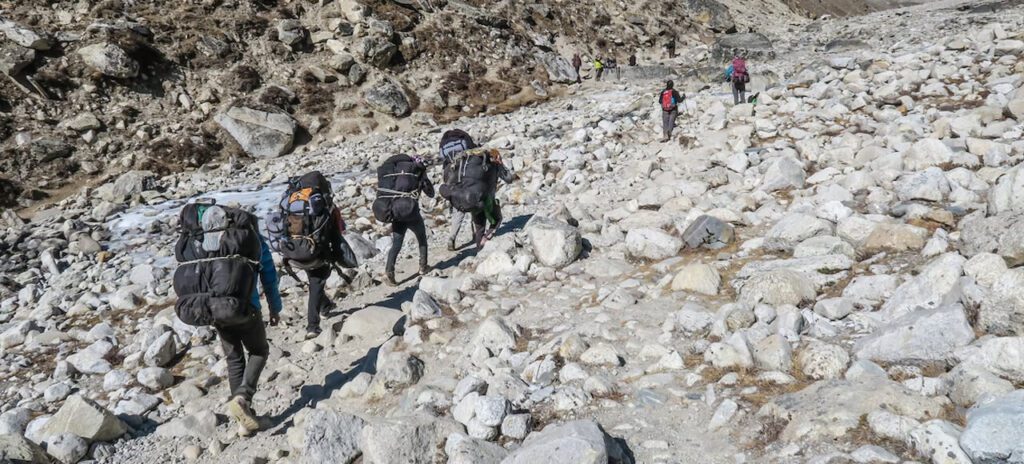
By understanding the various aspects of the Pikey Peak Trek, you can adequately prepare yourself for the journey ahead. From choosing the right route and obtaining the necessary permits to maintaining physical fitness and considering the services of local guides and porters, your trekking experience will be enriched and memorable. So, lace up your hiking boots and embark on an adventure that combines stunning natural beauty with cultural immersion.
Moderate Difficulty:
The Pikey Peak Trek is often classified as a moderate-level trek, making it accessible to a wide range of outdoor enthusiasts. Here are some factors that contribute to its moderate difficulty level.
Altitude:
While not as high as some of the more challenging treks in the region, Pikey Peak still reaches an altitude of 4,065 meters. Trekking at higher altitudes presents certain challenges, such as decreased oxygen levels and the potential for altitude-related illnesses.
You may also like: Pikey Peak Trek in December: Weather, Difficulty, Travel Tips, and More
However, the ascent to Pikey Peak is gradual, allowing for better acclimatization and minimizing the risk of altitude sickness. It is essential to be aware of the symptoms of altitude sickness and take necessary precautions, such as acclimatization days and maintaining a slow and steady pace.
Trekking Duration and Distances:
The trek generally spans a period of 8-10 days, with daily walking distances ranging from 5 to 7 hours. This duration allows trekkers to acclimatize gradually and adapt to the changing terrain. While some sections of the trail may involve steep and rocky terrain, they are manageable with proper hiking techniques and a reasonable level of fitness.
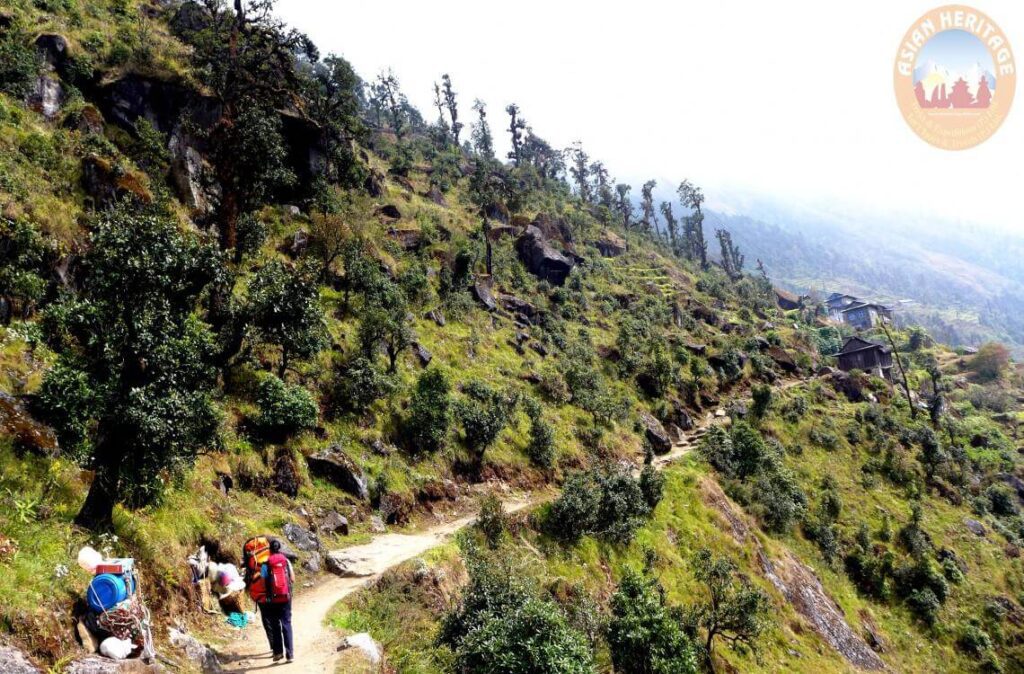
It is recommended to incorporate rest days into your itinerary to allow for recovery and exploration of the surroundings.
Weather Conditions:
Weather conditions in the Himalayas can be unpredictable, especially at higher altitudes. Trekkers on the Pikey Peak Trek may encounter varying weather patterns, including cold temperatures, occasional rainfall, and potentially strong winds.

It’s important to pack appropriate clothing layers that can withstand these conditions and protect you from the elements. Being mentally prepared for changing weather and adapting your pace and schedule accordingly will contribute to a more comfortable and safe trekking experience.
Physical Fitness:
While the Pikey Peak Trek does not require extreme fitness levels, having a reasonable level of physical fitness will greatly enhance your trekking experience. Prior preparation that includes cardiovascular exercises, strength training, and regular hiking practice will help build endurance and stamina.
Popular: Pikey Peak Trek in November: Weather, Difficulty, Travel Tips, and More
Additionally, incorporating aerobic exercises like running or cycling into your routine can be beneficial for preparing your cardiovascular system for the trek.
Mental Preparedness:
Trekking at any difficulty level requires mental strength and determination. The Pikey Peak Trek, although moderate in difficulty, still presents challenges along the way. Trekking for several consecutive days, enduring long hours of walking, and facing various terrains can be physically and mentally demanding. Having a positive mindset, being prepared for the exertion, and staying motivated will help you overcome any obstacles you may encounter.
While the Pikey Peak Trek is considered moderate in difficulty, it is essential to be adequately prepared physically and mentally. Engaging in pre-trek training, understanding the potential challenges, and adopting a cautious approach to altitude acclimatization will ensure a safer and more enjoyable experience. Embrace the opportunity to immerse yourself in the stunning landscapes, cultural encounters, and the rewarding sense of accomplishment that comes with completing the Pikey Peak Trek.
Altitude Considerations:
Altitude is a crucial factor to consider when undertaking any trek in the Himalayas, including the Pikey Peak Trek. Here are some key points to keep in mind regarding altitude:
Acclimatization:
Acclimatization refers to the process of adapting to higher altitudes to prevent altitude sickness. It is essential to allow your body enough time to adjust gradually to the decreased oxygen levels as you ascend during the trek.

The Pikey Peak Trek provides a suitable itinerary with gradual gains in altitude, allowing for better acclimatization. It’s important to incorporate rest days at specific points along the trail to give your body time to adjust and minimize the risk of altitude-related illnesses.
Symptoms of Altitude Sickness:
Altitude sickness, also known as acute mountain sickness (AMS), can affect anyone regardless of their fitness level or prior trekking experience. Symptoms can include headache, dizziness, nausea, loss of appetite, fatigue, and difficulty sleeping. It’s crucial to be aware of these symptoms and take them seriously.
If symptoms worsen or persist, it is important to descend to lower altitudes and seek medical attention if necessary. Consulting with a healthcare professional before your trek and carrying any recommended medications can be helpful.
Hydration and Nutrition:
Proper hydration and nutrition play a vital role in altitude acclimatization. Drinking plenty of fluids, such as water and herbal teas, helps combat the dehydration that can occur at higher altitudes.
More: Pikey Peak Trek in May: Weather, Difficulty Travel Tips, and More
It’s recommended to drink at least 3-4 liters of water per day during the trek. Additionally, maintaining a balanced diet that includes carbohydrates, proteins, and healthy fats will provide the necessary fuel for your body’s energy requirements.
Slow and Steady Ascent:
One of the key principles for altitude acclimatization is a slow and steady ascent. Rushing or gaining altitude too quickly increases the risk of altitude sickness. The Pikey Peak Trek allows for a gradual ascent, which aids in better adjustment to the altitude.
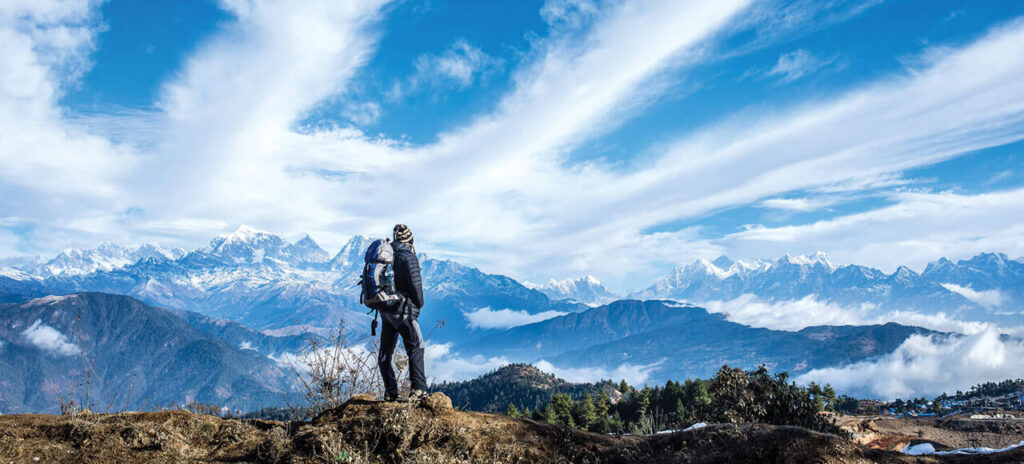
It’s important to maintain a comfortable and sustainable pace, taking breaks as needed. Listen to your body and communicate with your trekking partners and guides regarding any concerns or symptoms.
Safety Measures:
It’s essential to be prepared and take necessary safety measures to ensure a safe trek at higher altitudes. Carrying a comprehensive first aid kit, including medications for altitude sickness, is recommended. It’s also advisable to trek with a knowledgeable guide who can provide guidance, monitor your health, and assist in case of any emergencies. Follow the instructions of your guide regarding the trekking route, safety precautions, and recommended rest stops.

By understanding the altitude considerations and taking appropriate measures, you can minimize the risks associated with trekking at higher altitudes. Being vigilant about your health, allowing for proper acclimatization, staying hydrated, and seeking medical attention when needed will contribute to a safer and more enjoyable Pikey Peak Trek experience.
Trail Conditions:
The Pikey Peak Trek offers a well-defined trail with varied terrain, providing trekkers with an exciting and diverse trekking experience. Here are some key points to consider regarding trail conditions:
Path Terrain:
The trail consists of a mix of terrains, including well-maintained paths, rocky sections, and occasional steep ascents and descents. The initial part of the trek traverses through beautiful valleys and farmland, with relatively flat and easy terrain.

As you ascend towards Pikey Peak, the trail gradually becomes steeper and rockier. Trekking poles can be useful for stability and support, particularly on uneven and rocky sections.
Pikey Peak Trek Difficulty- Narrow Paths and Ridge Walks:
At certain sections, the trail may narrow, especially during ridge walks or while passing through dense forests. These narrow paths can be challenging for those who are not comfortable with heights.
It’s important to maintain focus, take your time, and follow the guidance of your guide or porter. Trekking during daylight hours ensures better visibility and adds to the overall safety of navigating these sections.
Weather Variability:
The weather in the Himalayas is known for its unpredictability, and the Pikey Peak Trek is no exception. Trekkers may encounter changing weather conditions, including sudden rain showers, fog, or strong winds. It’s essential to be prepared with appropriate clothing layers to protect yourself from the elements. Quick-drying, moisture-wicking clothing is recommended, along with a waterproof outer layer to stay dry during rainfall.
Teahouse Accommodation:
Along the Pikey Peak Trek, there are teahouses and homestays available for accommodation. These provide basic amenities such as a bed, blankets, and meals. However, it’s important to note that facilities may be more basic compared to more popular trekking routes.
The availability of electricity, hot water, and Wi-Fi may be limited or intermittent. It’s advisable to bring a sleeping bag for added comfort and a headlamp for better visibility during evenings and early mornings.
Local Interaction:
One of the highlights of the Pikey Peak Trek is the opportunity to interact with the local Sherpa communities along the way. As you pass through traditional Sherpa villages, you can immerse yourself in their unique culture, witness their way of life, and experience their warm hospitality.

Engaging with the locals provides a deeper understanding of the region and adds to the overall richness of the trekking experience.
Trekking Season Crowds:
Compared to more popular treks in the region, the Pikey Peak Trek sees fewer trekkers. This can be an advantage for those seeking a quieter and less crowded trekking experience.
However, it’s important to note that during peak trekking seasons, such as spring and autumn, there may still be a moderate number of trekkers on the trail. It’s advisable to book accommodation in advance, especially during these seasons, to ensure availability.

By understanding the varied trail conditions of the Pikey Peak Trek, you can better prepare yourself for the journey ahead. Being equipped with appropriate gear, trekking during daylight hours, and embracing the unique experiences that come with interacting with local communities will enhance your overall trekking adventure.
Also take a look at: Nepal travel guide
Stunning Views and Cultural Encounters:
One of the highlights of the Pikey Peak Trek is the awe-inspiring panoramic views it offers. On a clear day, trekkers are rewarded with magnificent vistas of Mount Everest, Kanchenjunga, Makalu, and other Himalayan giants.
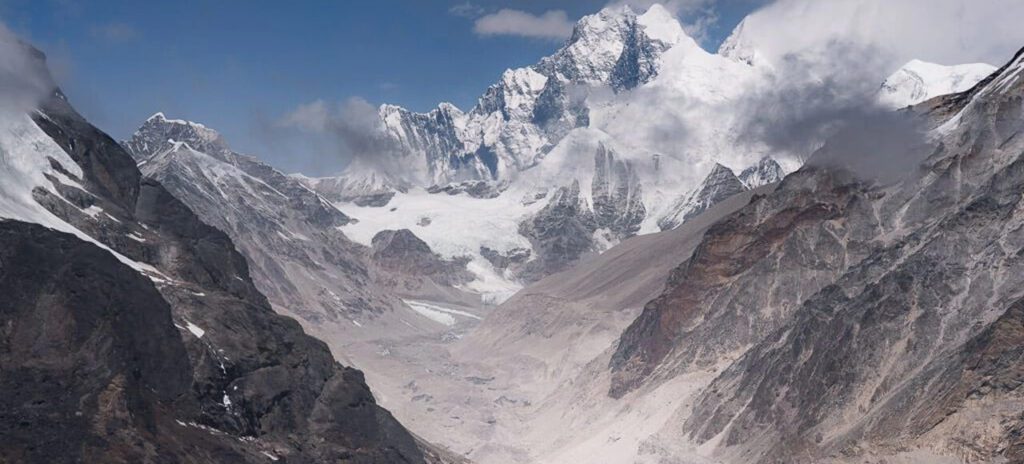
The trek also takes you through traditional Sherpa villages, providing opportunities to interact with the locals, experience their warm hospitality, and learn about their unique culture and traditions.
Accommodation and Facilities:
Accommodation along the Pikey Peak Trek primarily consists of teahouses and homestays, providing basic yet comfortable lodging options for trekkers. Here’s what you can expect in terms of accommodation and facilities:
Teahouses:
Teahouses are small lodges that offer rooms with basic amenities such as a bed, blankets, and pillows. While the facilities are relatively simple, teahouses provide a warm and cozy atmosphere for trekkers to rest and rejuvenate after a day of trekking.
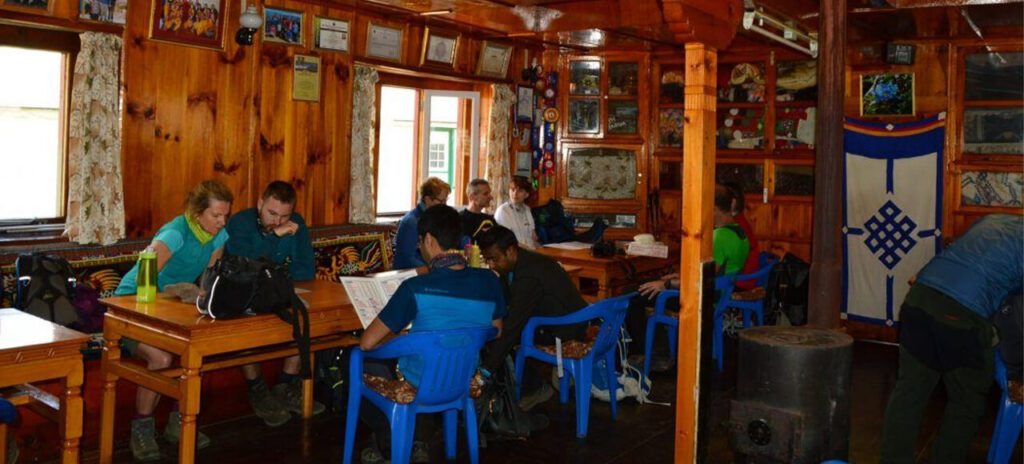
Keep in mind that the facilities in teahouses may vary from one lodge to another, with some offering shared bathrooms and toilets, while others may have attached facilities.
Homestays:
In some villages along the Pikey Peak Trek, you may have the opportunity to stay in homestays. Homestays provide a unique cultural experience, allowing you to live with local families and gain insights into their way of life.
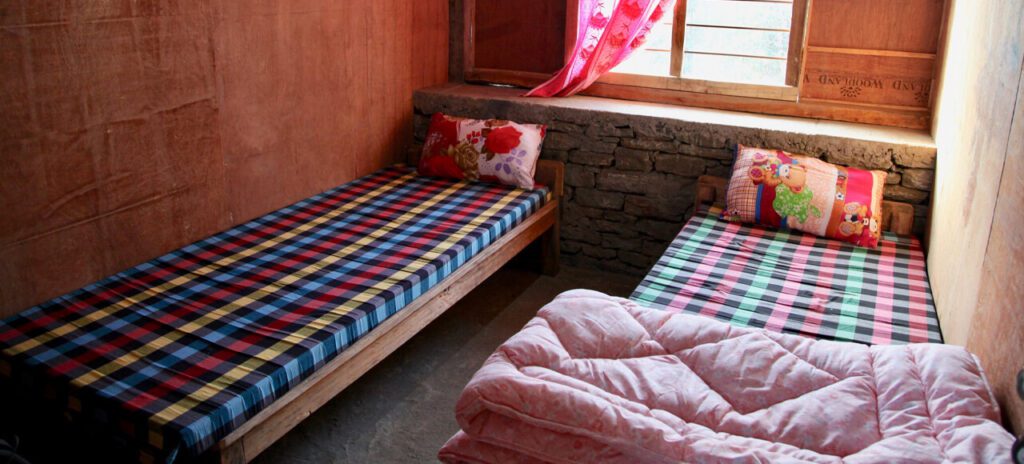
Accommodation in homestays usually involves sleeping in a designated room within the family’s house. This provides a more intimate experience and an opportunity to interact closely with the local community.
Meals:
Teahouses and homestays typically provide meals as part of their services. You can expect a variety of local and international dishes, including Dal Bhat (rice with lentil soup), noodles, soups, potatoes, and seasonal vegetables.

These meals serve as a great source of energy to fuel your trekking adventures. While the menu options may be limited, the food is usually freshly prepared and hearty.
Electricity and Charging Facilities:
It’s important to note that electricity availability along the trek can be limited. Teahouses and homestays may have scheduled electricity hours during the evenings, where you can charge your electronic devices.
It is advisable to carry a portable charger or spare batteries to ensure you can charge your essential devices when necessary. Additionally, it’s wise to pack a headlamp or flashlight to navigate in areas with limited lighting.
Wi-Fi and Mobile Connectivity:
In most teahouses and homestays, Wi-Fi and mobile connectivity may be limited or nonexistent. Consider this an opportunity to disconnect from the digital world and embrace the tranquility of the trek.
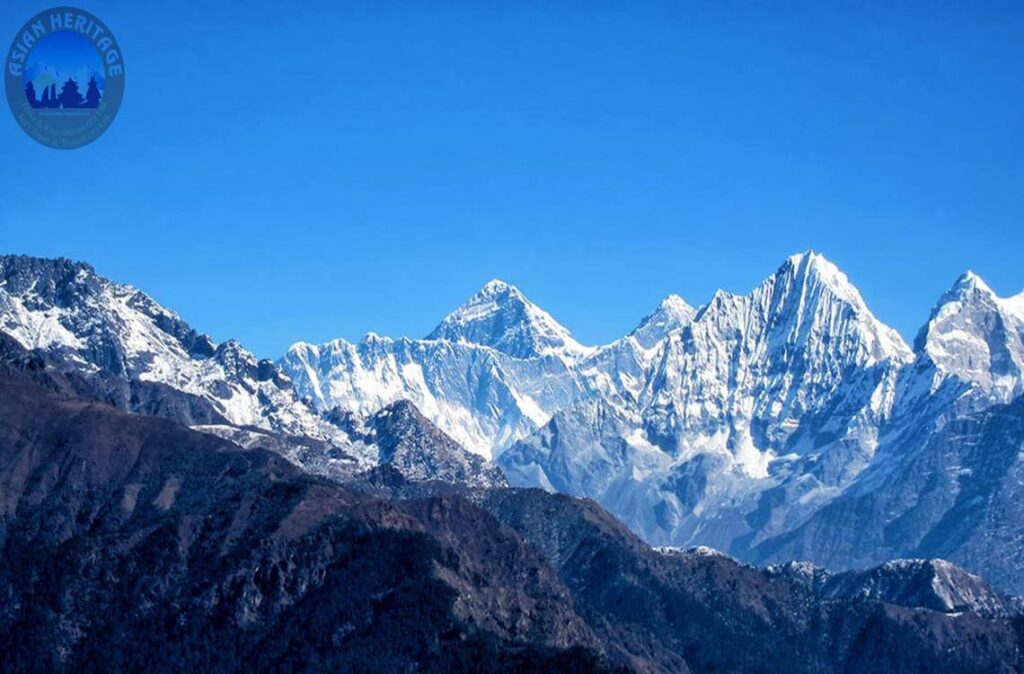
If you need to stay connected, it’s advisable to get a local SIM card before starting the trek, as it may provide better coverage in certain areas.
Washing and Toilet Facilities:
The toilet facilities in teahouses and homestays are usually basic, with shared squat toilets. Hot showers may be available in some places for an additional fee. However, it’s important to keep in mind that hot water availability can be inconsistent. Carrying wet wipes and hand sanitizer can be helpful for maintaining hygiene during the trek.
Sleeping Bag and Gear Rental:
While teahouses provide basic bedding, it’s recommended to bring your own sleeping bag for added comfort and warmth, especially during colder seasons. If you don’t have a sleeping bag or other trekking gear, it’s possible to rent them in Kathmandu or from local shops before starting the trek.
Booking Accommodation:
While the Pikey Peak Trek is less crowded compared to other popular routes, it’s still advisable to book your accommodation in advance during peak trekking seasons. This ensures availability and avoids any last-minute hassles. Local trekking agencies can assist in making these arrangements and provide guidance on the best places to stay along the trek.
Being prepared for basic facilities and simple accommodations allows you to embrace the rustic charm of the Pikey Peak Trek. Enjoy the warmth of the teahouses, savor local cuisine, and connect with the local communities as you embark on this unforgettable journey. The accommodation and facilities may be basic, but they provide all the necessary amenities to make your trek comfortable and enjoyable. Embrace the simplicity and immerse yourself in the local way of life as you traverse the beautiful landscapes of the Pikey Peak Trek.
Highlights of the Pikey Peak Trek
The Pikey Peak Trek offers a range of highlights that make it a truly special and rewarding adventure. Here are some key highlights to look forward to:
Stunning Mountain Views:
The Pikey Peak Trek provides breathtaking panoramic views of some of the world’s highest mountains, including Mount Everest, Kanchenjunga, Makalu, and other prominent peaks in the Everest and Rolwaling regions.

The sunrise and sunset views from Pikey Peak itself are particularly spectacular, with the golden hues illuminating the snow-capped peaks in all their glory. These awe-inspiring vistas offer a sense of awe and reverence for the Himalayan beauty.
Cultural Immersion:
The trek allows you to immerse yourself in the rich Sherpa culture and experience the warm hospitality of the local communities. Along the trail, you’ll pass through traditional Sherpa villages, where you can interact with the locals, observe their unique way of life, and learn about their customs and traditions.
You may have the opportunity to visit monasteries, such as the famous Thupten Choling Monastery, and witness traditional Buddhist ceremonies, adding a spiritual dimension to your trek.
Off-the-Beaten-Path Experience:
The Pikey Peak Trek offers a quieter and less crowded alternative to some of the more popular trekking routes in the region. You’ll often find yourself trekking through peaceful trails, surrounded by pristine natural beauty. The tranquility and serenity of the surroundings allow for a deeper connection with nature and a more intimate experience of the Himalayan landscapes.
Diverse Landscapes:
The trek takes you through a diverse range of landscapes, showcasing the natural beauty of the Solu-Khumbu region. You’ll pass through lush forests of rhododendron, pine, and oak trees, cross high alpine meadows adorned with wildflowers, and traverse ridges with commanding views of valleys and mountains.
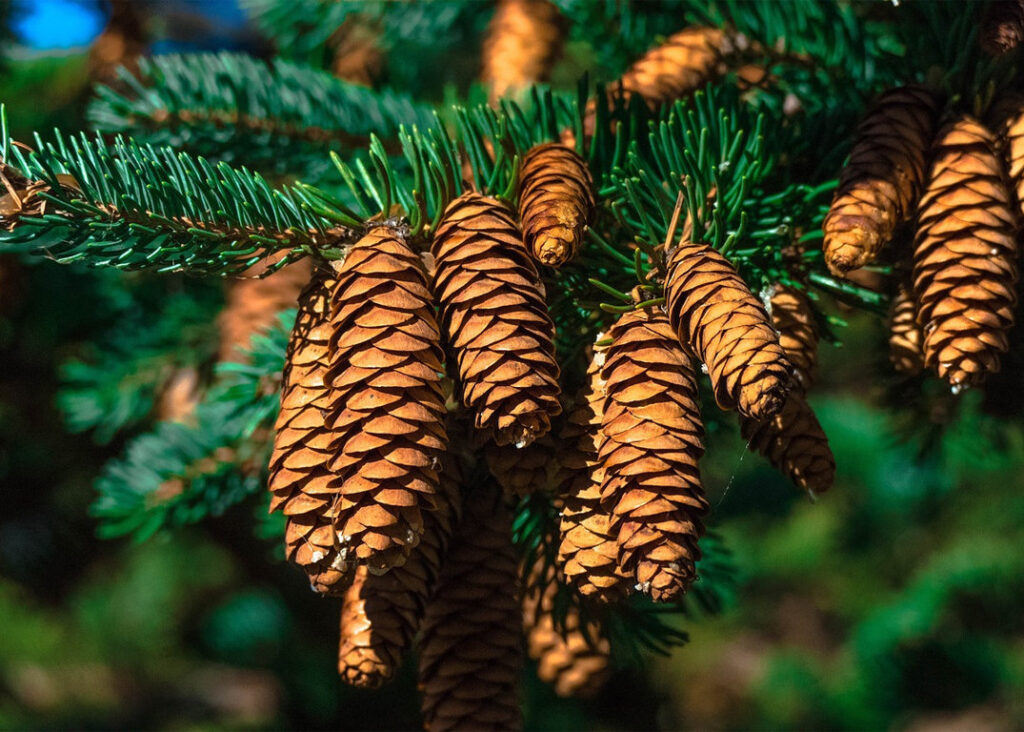
The changing scenery adds excitement and keeps the trek dynamic and engaging throughout.
Wildlife and Flora:
The Solu-Khumbu region is home to a rich biodiversity. During the Pikey Peak Trek, you may have the opportunity to spot various species of birds, including the colorful Danphe (Lophophorus impejanus), Nepal’s national bird.
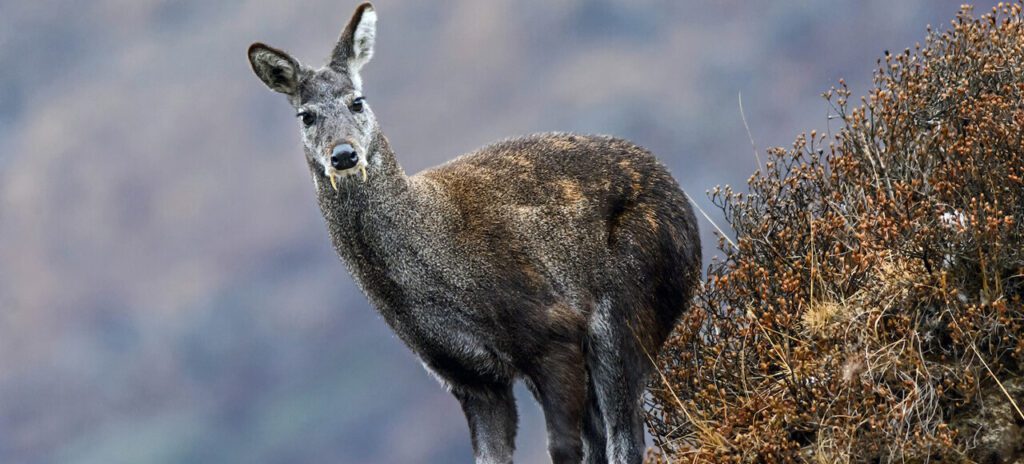
The forests along the trail also provide habitat for other wildlife, such as musk deer, Himalayan thar, and the elusive snow leopard. The diverse flora, including the blooming rhododendrons in the spring season, adds vibrant colors to the landscape.
Sunrise and Sunset at Pikey Peak:
The highlight of the trek is undoubtedly reaching the summit of Pikey Peak and witnessing the breathtaking sunrise or sunset. As the first rays of sunlight or the last golden light of the day illuminate the snow-covered peaks, the views are nothing short of magical. The sense of achievement and the serene beauty of the surroundings make these moments truly unforgettable.
Read: Pikey Peak Trek in April: Weather, Crowd, Difficulty Travel Tips, and More
The Pikey Peak Trek offers a unique blend of natural beauty, cultural immersion, and tranquility. From the awe-inspiring mountain views to the encounters with local communities, each day of the trek unfolds new experiences and memories. Embrace the highlights of this hidden gem and create lifelong memories in the heart of the Himalayas.
Also take a look at: Nepal Trekking Guide
Pikey Peak Trek Difficulty Conclusion
In conclusion, the Pikey Peak Trek is a hidden gem nestled in the Solu-Khumbu region of Nepal, offering a moderate yet rewarding adventure for trekkers seeking a unique and off-the-beaten-path experience. With its stunning mountain views, cultural immersion, diverse landscapes, and comfortable yet basic accommodations, the trek has much to offer.
The trek provides trekkers with an opportunity to witness breathtaking panoramic views of the world’s highest mountains, including the majestic Mount Everest. The sunrise and sunset from Pikey Peak itself are particularly awe-inspiring, leaving trekkers with unforgettable memories of the Himalayan beauty.

Altitude considerations play a crucial role in the trek, and it’s essential to allow for proper acclimatization and take necessary precautions. Understanding the symptoms of altitude sickness, maintaining hydration and nutrition, and following a slow and steady ascent is key to ensuring a safe and successful trek.
Ultimately, the Pikey Peak Trek provides a unique blend of natural beauty, cultural immersion, tranquility, and adventure. It offers trekkers the chance to experience the hidden treasures of the Solu-Khumbu region, away from the crowds of more popular routes. By embracing the highlights of the trek, respecting the local culture, and being prepared for the trail conditions, trekkers can embark on a remarkable journey in the heart of the Himalayas, creating memories that will last a lifetime.







